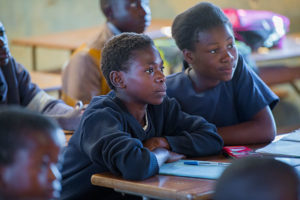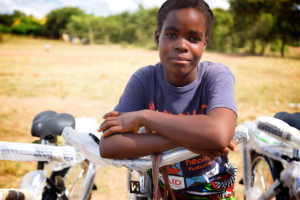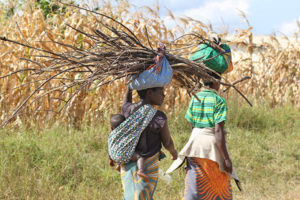Education for All, Especially Girls
One of the United Nations’ premier goals is to ensure inclusive, quality education for all and to promote lifelong learning. As with most development issues, a push for universal education particularly impacts girls. Throughout much of Africa, girls face more barriers to completing their education. Girls are more likely forced to stay at home to do domestic chores. They also drop out of school due to childhood pregnancy. Yet getting girls educated is essential to raising the socio-economic status of their communities. Not only are there enormous benefits in completing one’s primary education, but girls who complete secondary education are six times less likely to marry as child-brides.
 According to UNESCO, when girls receive an education their opportunities for employment are greater. They are also more likely to close the gender pay gap as well as less likely to become pregnant as teens. Their chances of mortality during childbirth are lower. These are just some of the many benefits of educating girls.
According to UNESCO, when girls receive an education their opportunities for employment are greater. They are also more likely to close the gender pay gap as well as less likely to become pregnant as teens. Their chances of mortality during childbirth are lower. These are just some of the many benefits of educating girls.
UNESCO’s data also highlights that in poorer areas, girls are even less likely than boys to go to school. Thus, the system perpetuates itself, as girls not getting an education makes them more likely to be poor for the rest of their lives, and girls in poor families are less likely to get an education to begin with. When we break this cycle, there will be long term benefits.
The biggest barrier to girls receiving a consistent education is often the physical act of getting to the school. According to UNICEF, girls between 5 and 14 years old spend 40% more time on domestic chores than boys of the same age. Tasked with many more unpaid responsibilities— including collecting water and firewood— girls fall behind because of the cultural obstacles they face. In rural regions of the world, girls also face challenging, long walks to get to school after their household duties. Girls arrive to school tired if they even arrive at all.
Over the past ten years, World Bicycle Relief has mobilized students, especially female students, who face long, difficult journeys to school. At World Bicycle Relief, we believe a simple, sturdy bicycle has the power to change lives. By giving a girl a way to get to school safely, you can empower her to stay in school and get her education, breaking the cycle of poverty with a bicycle.
 As part of the third UN Sustainable Development Goal, countries around the world have committed to reducing maternal mortality and ensuring universal access to sexual and reproductive health-care services by 2030. Currently, funding and investment in reproductive healthcare for women is often overlooked even in the most wealthy nations in the world. Therefore, it should come as no surprise that there is still a critical need for improving health systems as well as focusing on the health needs of girls and women in developing countries.
As part of the third UN Sustainable Development Goal, countries around the world have committed to reducing maternal mortality and ensuring universal access to sexual and reproductive health-care services by 2030. Currently, funding and investment in reproductive healthcare for women is often overlooked even in the most wealthy nations in the world. Therefore, it should come as no surprise that there is still a critical need for improving health systems as well as focusing on the health needs of girls and women in developing countries. With the wealth and technology we have in the 21st century, childbirth should not be the leading killer of young women. The issue in many rural communities, particularly in sub-Saharan Africa, is the lack of access to health services before, during and after pregnancy. The low number of skilled healthcare workers is also an issue. Healthcare workers’ inability to reach patients in remote locations compounds the issue, as well.
With the wealth and technology we have in the 21st century, childbirth should not be the leading killer of young women. The issue in many rural communities, particularly in sub-Saharan Africa, is the lack of access to health services before, during and after pregnancy. The low number of skilled healthcare workers is also an issue. Healthcare workers’ inability to reach patients in remote locations compounds the issue, as well.